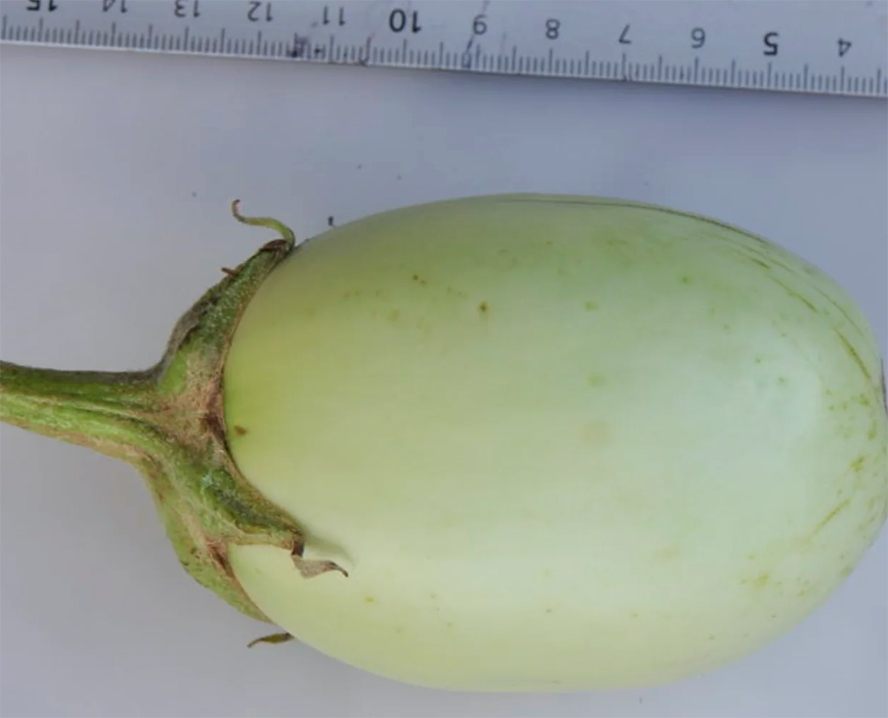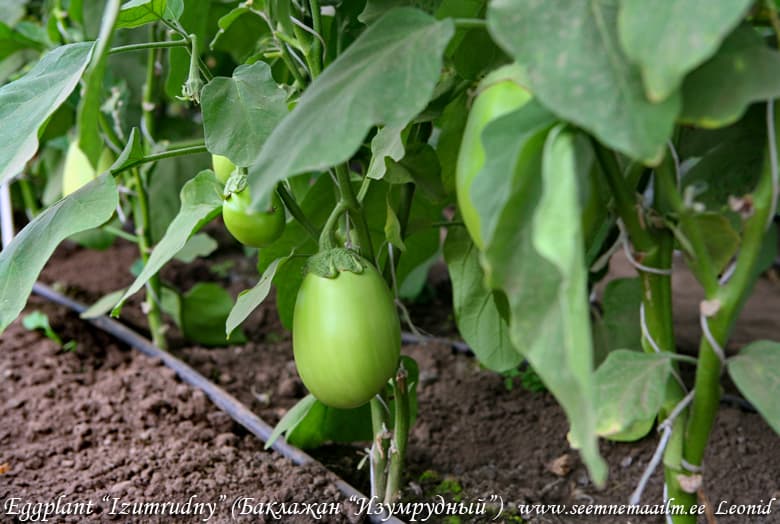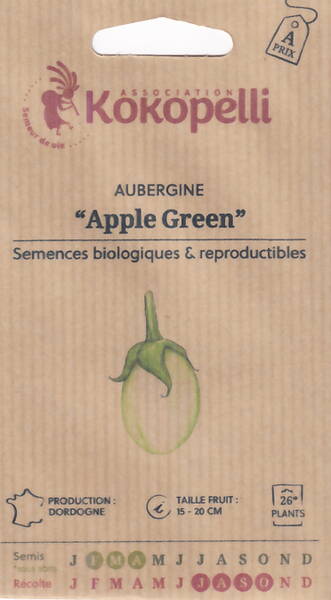The variety was bred at the University of New Hampshire (USA) in 1964. It was obtained by crossing the sweet and bitter eggplant "Chinese Red" (Solanum integrifolium).
Early maturing (105-110 days) variety for open ground, film greenhouses and shelters.
The plant is 60-90 cm tall. The fruits are oval, light green, weighing 120-150 g. Fruit size: 15–20 cm.
The pulp is tender, white-cream. The taste qualities are very high.
Value of the variety: resistance to diseases and stress, increased cold resistance and high yield.
Recommended for all types of processing.

Eggplant seedlings are grown for seedlings in basically the same way as peppers.
The differences are as follows: the mixture is prepared from 2 parts fresh turf soil and 1 part humus with the addition of a small amount of sand. The seeds are sown in furrows, the distance between which is 3 cm. The sealed seeds are watered with water at room temperature. The boxes with seedlings are kept at a temperature of +12+16°C for 5-10 days.
They are picked at the age of cotyledon leaves. Peppers and (especially) eggplants for seedlings are best grown in individual pots, since they do not tolerate transplantation well. Seedlings are picked at the stage of cotyledon leaves into individual pots filled with the same mixture as for sowing seeds.
The temperature regime for growing is similar to that used for growing pepper seedlings, but eggplants require more water: during the seedling period, they are watered at least 12 times, without, however, allowing waterlogging.
The first feeding is done one and a half weeks after picking; 30-40 g of superphosphate and 15 g of potassium salt or 200 g of wood ash are added to 10 liters of water. The second feeding is done two and a half weeks after the first: 10-15 g of ammonium nitrate and potassium salt are added to 10 liters of water.
Hardening of seedlings begins one and a half weeks before planting in a permanent place at a temperature of +15+17°C.

Forming a bush and obtaining your own seeds.
To form a compact bush with well-developed lateral shoots, it is necessary to remove the top of the main stem when the eggplant plants reach a height of 25-30 cm. Of all the shoots that appear, only 4-5 upper ones (stepchildren) are left, and the rest are removed. The crop will form on the remaining shoots. In this case, 6-8 fruits are left on eggplant plants. In hot, humid weather, stepchildren, especially lower stepchildren, are a must, and vice versa, in a hot, dry summer, plants are not stepchildren. In this case, the leaf mass will protect the soil under the bush from evaporation. When the plants reach a height of 25-30 cm, their apical growth points are removed. In pinched plants, 3-4 lateral shoots are left. Insufficiently complete pollination of flowers can cause the appearance of non-standard (crooked) fruits. To prevent this, it is necessary to use artificial pollination of flowering plants, i.e. in hot, sunny, calm weather, lightly shake the plants.
To obtain eggplant seeds, two or three fruits must be left on the plant, the remaining flowers and small fruits are removed so that the seed fruits form faster. Fruits that have reached full maturity are cut and left for 6-10 days in a warm place. The cut fruits are cut, the pulp is separated together with the seeds into a glass jar and left for 4-5 days for fermentation. Then they are washed with water and clean seeds are dried at a temperature of +28+30°C for two weeks.
Seeds can be stored for up to 5 years in a paper bag in a warm, dry place.












